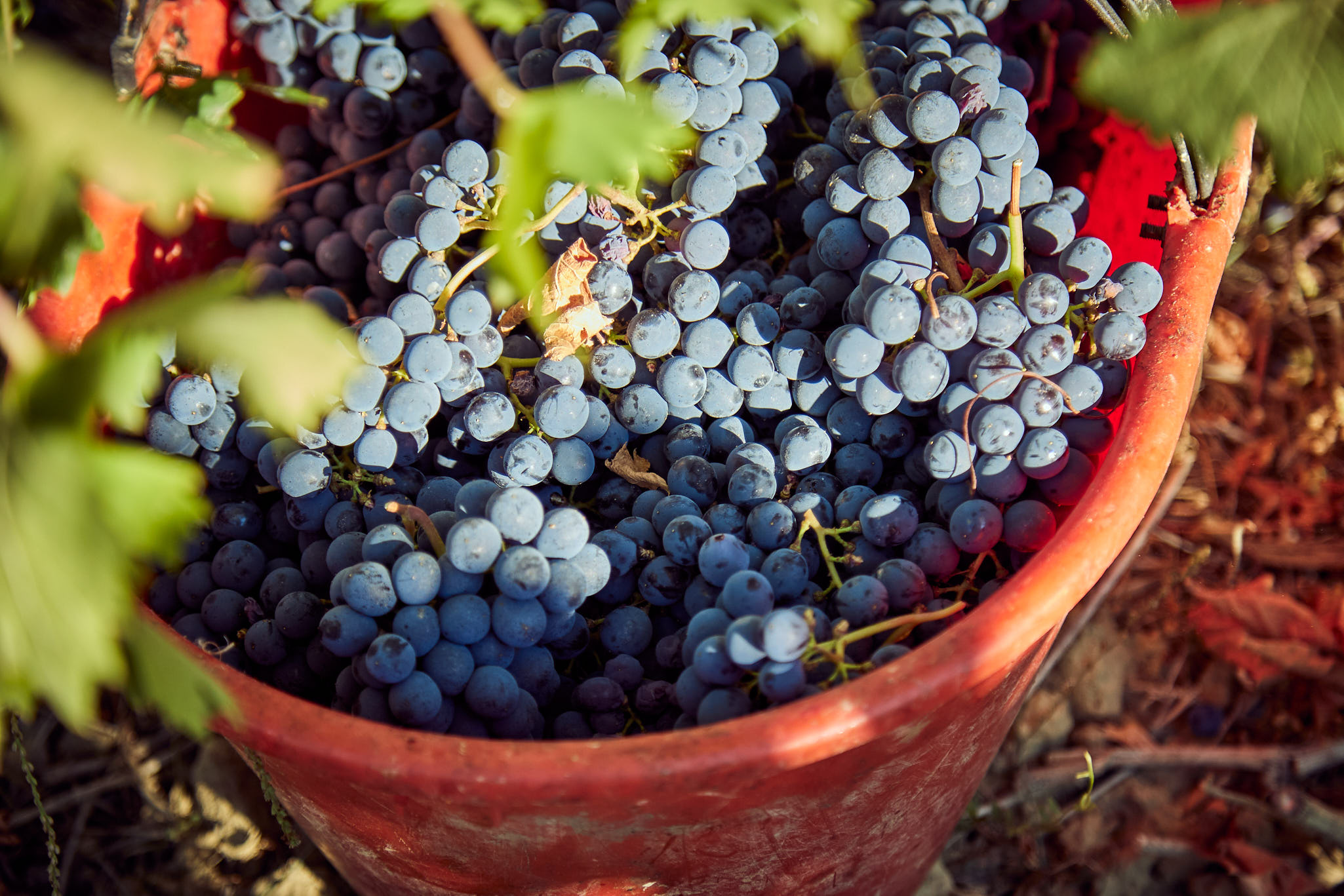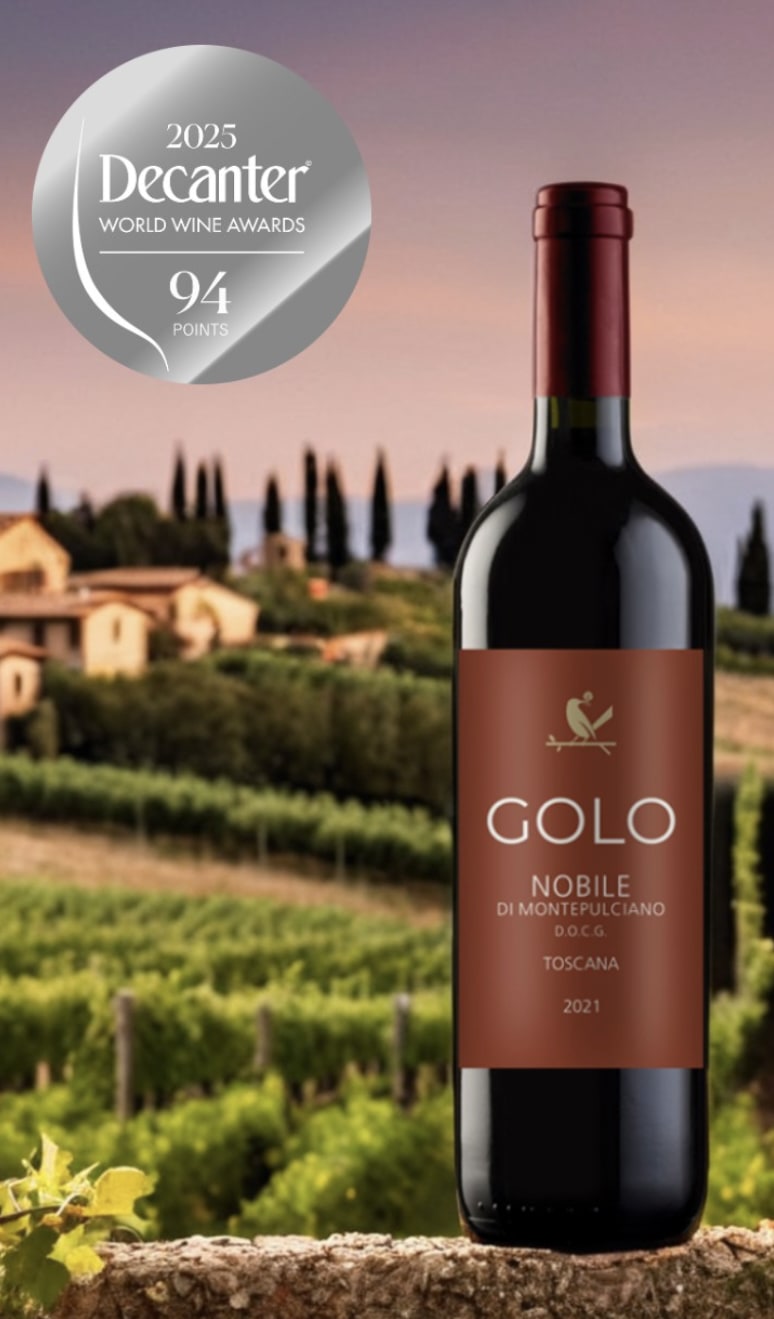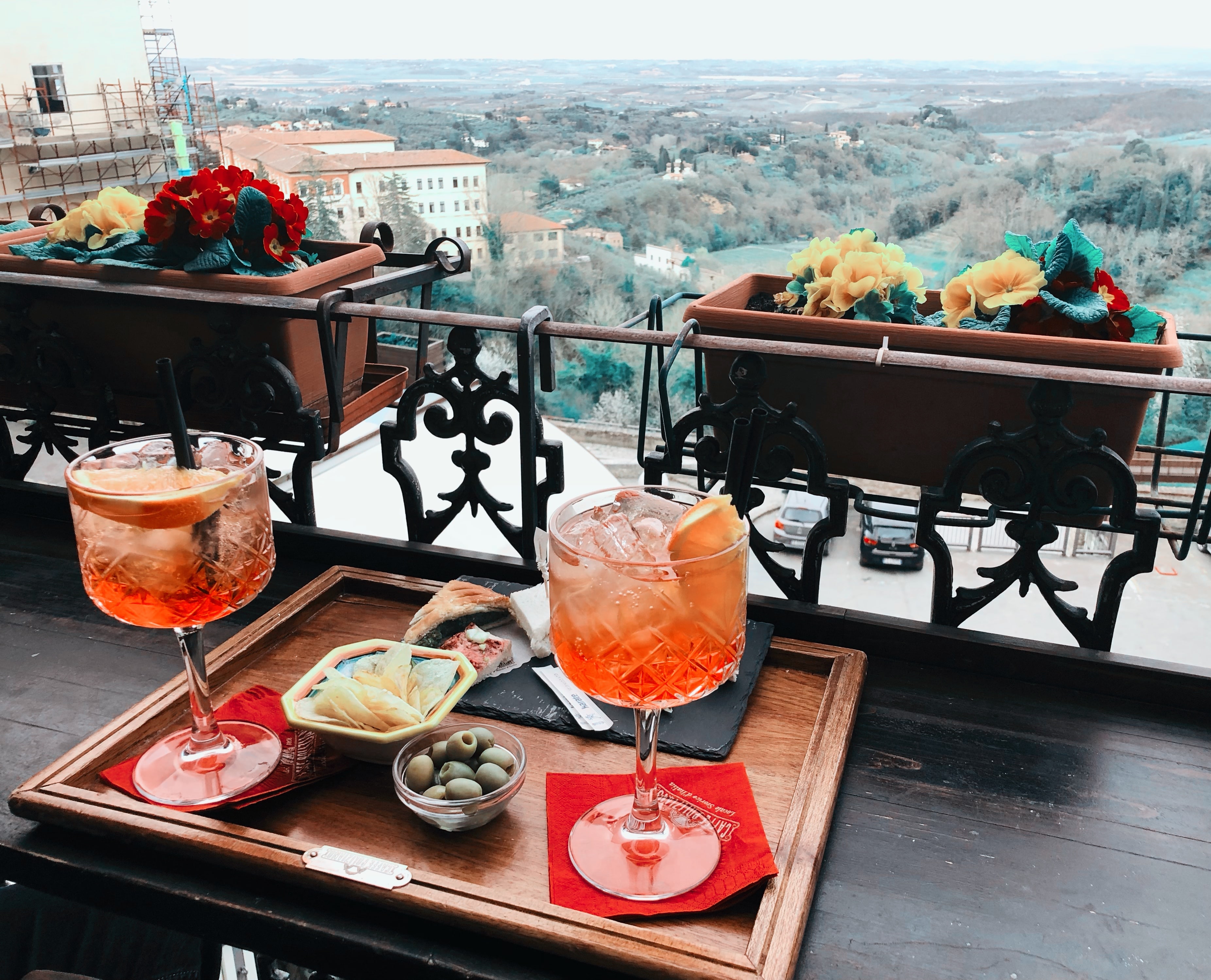Vino Nobile di Montepulciano DOCG Guide: Explore 2025 Trends
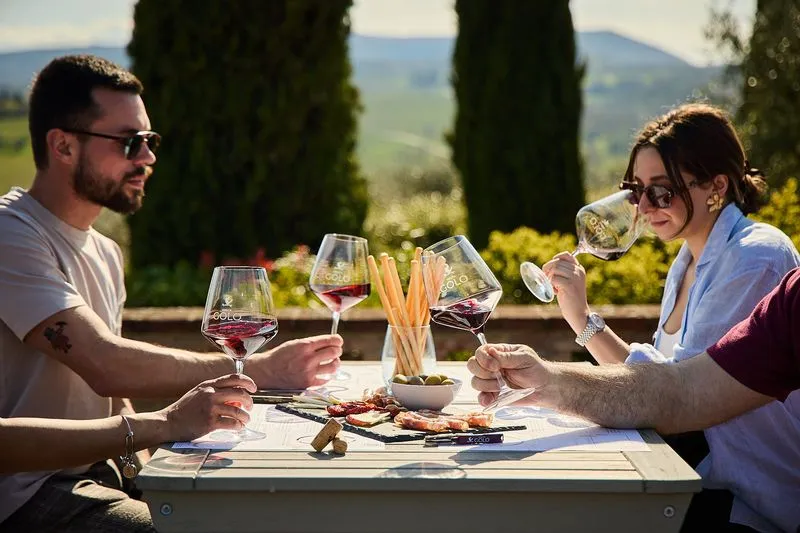
As 2025 approaches, wine lovers and industry experts are turning their attention to the rich world of Tuscan reds. With a legacy rooted in centuries of tradition, noble families, and evolving winemaking, vino nobile di montepulciano docg stands out for its unique character and growing global prestige.
Curious about what’s next for this celebrated classic? Explore the latest trends, vintages, and immersive experiences that define its allure. In this guide, you’ll discover the origins, defining traits, winemaking techniques, and the top 2025 trends shaping its future. Get ready for an in-depth journey through history, terroir, tasting, food pairings, emerging innovations, and expert tips.
The Legacy of Vino Nobile di Montepulciano DOCG
Vino nobile di montepulciano docg carries a legacy that stretches across centuries, blending nobility, tradition, and innovation. Its story is deeply entwined with the cultural and historical fabric of Tuscany, captivating wine lovers with every glass.

Historical Roots and Evolution
The story of vino nobile di montepulciano docg begins in the heart of Tuscany, where winemaking dates back to the 8th century. Ancient records show that Montepulciano’s vineyards were already recognized for their quality during medieval times. The region’s wine gained special status among the Italian nobility, leading to its “nobile” designation, which means “noble” in Italian.
Throughout the Renaissance, noble families such as the Medici played a pivotal role in shaping the wine’s reputation. By the 18th century, vino nobile di montepulciano docg was celebrated in the courts of Europe, becoming a symbol of refinement and taste. Key historical milestones include the codification of local winemaking traditions, the introduction of vineyard zoning, and the adoption of quality-focused practices. In 1980, the wine was officially recognized as one of Italy’s first DOCG wines, cementing its position among the country’s elite.
A comparison with other Tuscan icons, such as Brunello di Montalcino and Chianti Classico, highlights the unique character of vino nobile di montepulciano docg. While Brunello is known for its power and aging potential, and Chianti for its versatility, Vino Nobile stands out for its elegance, structure, and deep connection to Montepulciano’s specific terroir.
Local winemaking traditions, from the use of large wooden casks to the selection of Prugnolo Gentile grapes, have shaped the wine’s style over generations. These customs are preserved through a combination of family heritage and evolving regulations, ensuring that the essence of vino nobile di montepulciano docg remains intact even as modern techniques are introduced.
DOCG Regulations and Standards
The DOCG status, or Denominazione di Origine Controllata e Garantita, represents the highest level of Italian wine classification. For vino nobile di montepulciano docg, this means strict controls on grape composition, production, and quality. By law, the wine must contain at least 70% Sangiovese, known locally as Prugnolo Gentile, with the remainder made up of permitted native and international varieties.
Aging requirements are also central to the DOCG identity. Standard bottlings must age for at least two years, while Riserva wines require a minimum of three years before release. These rules are enforced through rigorous quality control, including government tastings and chemical analysis, to guarantee consistency and excellence.
Recent updates to regulations have introduced even stricter standards for the 2025 vintage, focusing on sustainability, reduced yields, and greater transparency in labeling. The role of the consorzio—a collective of local producers—is crucial in maintaining these standards and promoting collaboration. For a deeper look at the consortium’s influence and how it shapes the future of vino nobile di montepulciano docg, see The consortium of Vino Nobile di Montepulciano.
Together, these regulations and the collective efforts of producers protect the heritage of vino nobile di montepulciano docg while encouraging innovation. This balance allows the wine to thrive in a modern world without losing its historical identity.
The Unique Terroir of Montepulciano
The distinctiveness of vino nobile di montepulciano docg is rooted in its extraordinary terroir. This region's landscape, climate, and soils work together to create a wine of remarkable depth and character. Understanding these elements is essential for appreciating what sets this Tuscan classic apart.

Geography and Climate
Montepulciano is nestled in southern Tuscany, between the Val di Chiana and Val d’Orcia. The region’s vineyards rise from 250 to 600 meters above sea level, offering a range of exposures and microclimates.
Warm summers are balanced by cool nights, while moderate rainfall throughout the year helps maintain vine health. These conditions encourage slow, even ripening of grapes, a key factor in the complexity of vino nobile di montepulciano docg.
The interplay of continental and Mediterranean influences results in wines with vibrant acidity and depth. The region’s varying altitudes and breezes protect grapes from extremes, preserving freshness and aromatic intensity.
Soil Composition and Vineyard Practices
The soils of Montepulciano are a patchwork of clay, sand, limestone, and tufa. This diversity shapes the structure and flavor profile of vino nobile di montepulciano docg, contributing to its signature elegance.
- Clay imparts power and structure.
- Sand lends aromatic lift and finesse.
- Limestone brings minerality and longevity.
- Tufa offers softness and approachability.
Producers employ both traditional and modern vineyard techniques. High-density planting and low yields are prioritized to concentrate flavors. Canopy management ensures optimal sun exposure and airflow, crucial for healthy ripening.
Modern methods, such as organic practices, are increasingly common, enhancing both sustainability and grape quality. The commitment to careful vineyard management is central to maintaining the wine’s reputation.
The Prugnolo Gentile Grape
At the heart of vino nobile di montepulciano docg is Prugnolo Gentile, a unique Sangiovese clone. This grape is celebrated for its thick skins, aromatic complexity, and impressive aging potential.
Compared to Sangiovese Grosso of Brunello or Chianti clones, Prugnolo Gentile offers a balance of fruit, floral notes, and earthy undertones. Its adaptability to Montepulciano’s terroir is crucial for the wine’s distinctive style.
The grape’s qualities are further enhanced by the region’s soils and climate. For a deeper look at how Prugnolo Gentile shapes the wine, explore the Vino Nobile di Montepulciano wine details. This varietal’s role is fundamental in defining the DOCG’s identity and enduring prestige.
Winemaking Techniques and Styles
Vino nobile di montepulciano docg is celebrated for its diverse winemaking techniques, balancing deep-rooted tradition with modern innovation. Producers in Montepulciano continuously refine their methods, ensuring each bottle reflects the unique character of the region while meeting evolving consumer expectations.

Traditional vs. Modern Approaches
The legacy of vino nobile di montepulciano docg is rooted in time-honored practices. Historically, winemakers relied on large Slavonian oak casks, known as botti, to age their wines for extended periods. This method imparts subtle oak influences while preserving the purity of the Prugnolo Gentile grape.
In the past few decades, there has been a shift toward integrating French barriques and experimenting with mixed aging regimes. Shorter maceration times and controlled fermentation temperatures are now used to achieve greater finesse and aromatic complexity. These changes allow for a more approachable style while maintaining the robust structure that defines vino nobile di montepulciano docg.
Producers are increasingly adopting organic and biodynamic viticulture, using modern technology to monitor fermentation and ensure consistency. The goal is to harmonize tradition and innovation, creating wines that honor their heritage yet appeal to contemporary palates. This approach has helped solidify the reputation of vino nobile di montepulciano docg as a benchmark for quality and authenticity.
Key Producers and Signature Styles
The signature styles of vino nobile di montepulciano docg are shaped by the philosophies of its leading estates. Some producers remain devoted to classic expressions, emphasizing elegance, complexity, and longevity. Others embrace modern techniques, resulting in wines with vibrant fruit, polished tannins, and a more immediate appeal.
Wines are typically classified as standard, Riserva, or single-vineyard bottlings. Riserva wines, such as the Golo Nobile di Montepulciano Riserva, undergo extended aging and represent the pinnacle of craftsmanship. These bottlings highlight the depth, structure, and age-worthiness that set vino nobile di montepulciano docg apart.
The region has also seen a rise in small-batch and boutique producers. These winemakers often focus on expressing unique vineyard sites, experimenting with cellar techniques, and crafting artisanal wines that reflect the diversity of Montepulciano. By exploring both established icons and emerging names, enthusiasts can experience the full spectrum of what vino nobile di montepulciano docg has to offer.
Tasting Profile and Food Pairing
Exploring the tasting profile and culinary harmony of vino nobile di montepulciano docg is essential for both enthusiasts and newcomers. This Tuscan classic reveals its character through a complex bouquet, structured palate, and remarkable versatility at the table and beyond.
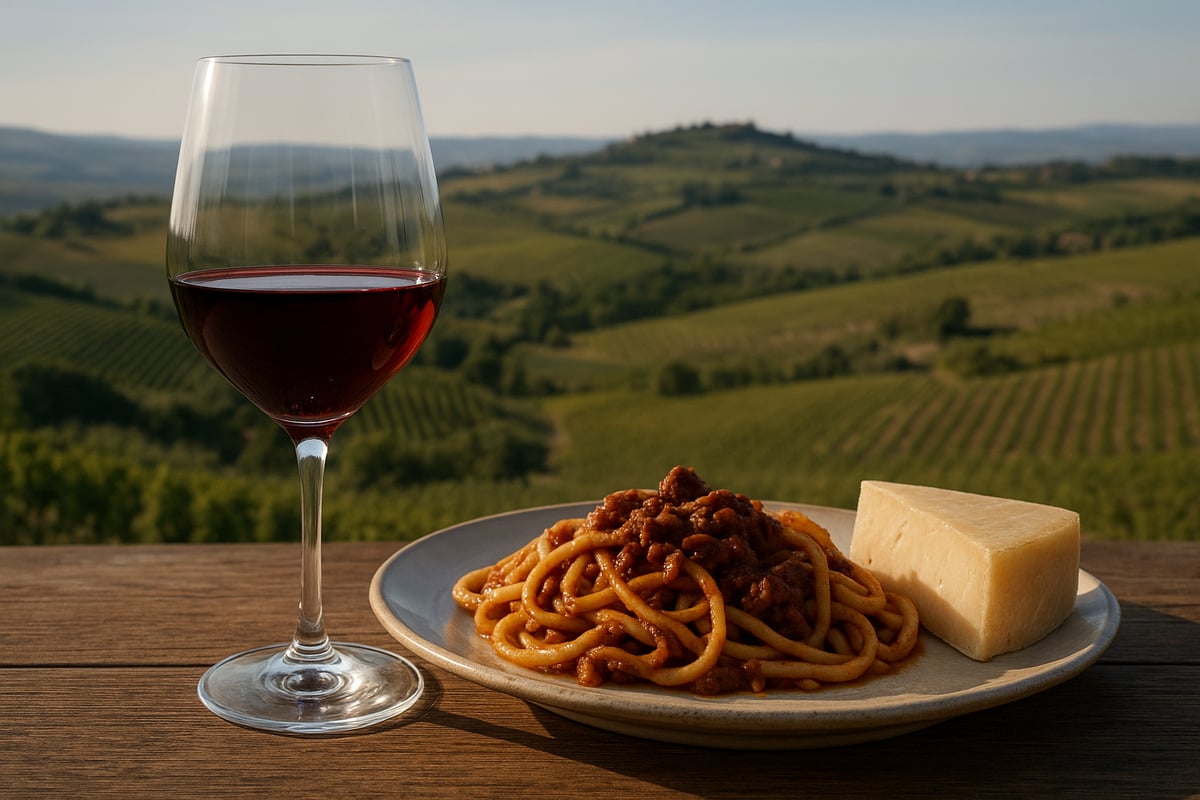
Aromas, Flavors, and Structure
Vino nobile di montepulciano docg stands out for its expressive aromas and layered palate. The wine typically opens with notes of ripe cherry, plum, and violet, underscored by subtle hints of earth and spice. These aromatics evolve as the wine breathes, revealing nuances of leather, tobacco, and dried herbs in older vintages.
On the palate, the wine offers a medium to full body, with firm yet refined tannins and vibrant acidity. This structure supports both freshness and longevity, allowing the wine to age gracefully. As it matures, flavors deepen, showing more tertiary notes like forest floor and sweet spice. Differences between recent and mature vintages become apparent: younger bottles display brighter fruit and more pronounced acidity, while aged examples offer greater complexity and a smoother mouthfeel.
Food Pairing Recommendations
The versatility of vino nobile di montepulciano docg makes it a superb companion for a variety of dishes. Classic Tuscan cuisine brings out the best in the wine's profile. Consider these pairings:
- Pici pasta with wild boar ragù: The wine's acidity and tannins cut through the richness of the sauce.
- Bistecca alla fiorentina: The firm structure enhances grilled meats.
- Roasted game and poultry: Complements earthy, savory flavors.
For cheese lovers, aged pecorino or truffle-infused selections pair beautifully. Rich sauces, mushrooms, and hearty stews also highlight the wine's depth. To maximize enjoyment, serve at 16–18°C and decant younger bottles for at least an hour. These practices help the wine express its full aromatic potential.
Wine Tourism and Tasting Experiences
Visiting Montepulciano offers an immersive way to understand vino nobile di montepulciano docg in its native context. Estate tours and cellar tastings provide firsthand insight into the region's traditions and innovations. Many wineries offer curated experiences that pair local cuisine with their signature wines, deepening appreciation for both.
Wine tourism is increasingly popular, attracting visitors who seek authentic connections with producers and terroir. Walking through vineyards, sampling directly from the barrel, and enjoying food pairings on site create lasting memories. For an in-depth look at wine tourism and tasting opportunities in Tuscany, explore this guide on wine tourism and tasting in Tuscany.
Vino Nobile di Montepulciano DOCG: 2025 Trends and Innovations
As the world of fine wine evolves, vino nobile di montepulciano docg stands at the forefront of innovation and tradition. The coming year promises a blend of heritage and forward-thinking, with producers embracing changes that will shape the identity and global presence of this iconic Tuscan wine. Let us explore the key trends and innovations set to define 2025.
Sustainability and Organic Practices
Sustainability is now a guiding principle for many producers of vino nobile di montepulciano docg. Across Montepulciano, more estates are converting to organic and biodynamic farming, prioritizing soil health and biodiversity. This shift is not only about environmental stewardship but also about adapting to climate change, ensuring resilience in the face of unpredictable weather.
Recent years have seen a marked increase in certified organic vineyards. Producers are investing in cover crops, renewable energy, and reduced chemical inputs. These practices, combined with stricter DOCG regulations, are elevating both quality and consumer trust. For a comprehensive look at how these changes are influencing the region, the article Vino Nobile di Montepulciano: An Unstoppable Force offers valuable insights.
The result is a new generation of wines that express terroir with greater purity and complexity, while meeting rising global expectations for ethical production.
New Winemaking Techniques and Blends
Innovation in the cellar is reshaping vino nobile di montepulciano docg. Winemakers are experimenting with amphorae and concrete tanks to enhance freshness and texture, moving beyond traditional large oak casks. This approach allows for micro-oxygenation while preserving the grape’s intrinsic character.
Adjustments to aging regimes are also becoming common. Some estates are reducing oak contact or blending different vessel types to create more approachable, fruit-driven styles. Native varieties are being explored as blending partners, alongside occasional use of international grapes, to add nuance and balance.
These techniques are not a rejection of tradition, but rather a creative evolution. The goal is to produce wines that are both expressive and contemporary, appealing to a broader audience without sacrificing the essence of vino nobile di montepulciano docg.
Market and Export Dynamics
The global profile of vino nobile di montepulciano docg is surging, with demand rising in established and emerging markets alike. Exports to the US, UK, and Asia have grown steadily, reflecting both the wine’s intrinsic quality and successful promotional efforts. Awards and high critic scores are further fueling interest and raising visibility.
| Year | Export Volume (hl) | Top Markets | Avg. Critic Score |
|---|---|---|---|
| 2022 | 59,000 | US, UK, Germany | 91 |
| 2023 | 62,500 | US, China, Japan | 92 |
| 2024 | 65,000 | US, UK, Canada | 92+ |
Recent preview events have highlighted the excitement surrounding new releases, as seen in the Anteprima: Vino Nobile 2025 report. This momentum is expected to continue, with limited bottlings and single-vineyard selections driving both scarcity and prestige.
As a result, vino nobile di montepulciano docg is becoming more accessible to collectors and enthusiasts worldwide, while maintaining its reputation for value and ageworthiness.
Wine Tourism and Experiential Marketing
Wine tourism is now an integral part of the vino nobile di montepulciano docg experience. The region is welcoming a new wave of visitors seeking immersive tastings, vineyard walks, and food pairings. Boutique wineries and historic estates are tailoring their offerings to create memorable, educational encounters.
Guests can participate in hands-on blending sessions, vertical tastings, and culinary workshops. These activities deepen appreciation for the wine’s complexity and the region’s cultural heritage. Many producers now offer exclusive events, allowing travelers to sample limited releases and engage directly with winemakers.
This focus on experiential marketing is strengthening consumer loyalty and broadening the appeal of vino nobile di montepulciano docg, making Montepulciano a must-visit destination for wine lovers.
Technology and Digital Engagement
Digital innovation is transforming how vino nobile di montepulciano docg reaches its audience. Wineries are leveraging online platforms for wine education, direct sales, and storytelling. Virtual tastings and webinars have become popular, enabling global access to exclusive experiences.
Social media channels and interactive websites provide updates on new releases, vineyard activities, and behind-the-scenes content. Online wine clubs offer curated selections, fostering community among enthusiasts and collectors.
By embracing technology, producers are building relationships with younger consumers and expanding their global footprint, ensuring that vino nobile di montepulciano docg remains relevant in a rapidly changing marketplace.
Emerging Consumer Preferences
Today’s wine drinkers are seeking transparency, authenticity, and a sense of place in their bottles. Vino nobile di montepulciano docg producers are responding with clear labeling, detailed vintage notes, and an emphasis on terroir-driven, small-batch production.
The demand for collectible, ageworthy wines is growing, as is interest in limited-edition releases and single-vineyard expressions. Consumers value stories of craftsmanship, sustainability, and innovation, driving a deeper connection to the region.
In 2025, these preferences will continue to shape how vino nobile di montepulciano docg is made, marketed, and enjoyed, ensuring its place among Italy’s most celebrated wines.
Expert Recommendations and How to Choose Your Vino Nobile
Selecting the right vino nobile di montepulciano docg can elevate your wine experience, whether you are a seasoned collector or just beginning your journey. This guide provides practical insights for understanding labels, sourcing bottles, cellaring, and accessing exclusive releases.
Decoding Labels and Vintages
Understanding the label is the first step in choosing the ideal vino nobile di montepulciano docg. Look for DOCG indicators such as “Riserva” for bottles aged at least three years, or “Vigna” for single-vineyard selections. Vintage variation plays a significant role in quality and style. Recent years like 2019 and 2021 have garnered high praise for balance and structure.
Expert reviews and critic scores can help you navigate standout years. For in-depth insights and tasting notes, consult resources like Vino Nobile di Montepulciano 2022 and 2021 Reviews, which detail the latest releases and stylistic trends.
Buying Guide: Where and How to Purchase
Finding authentic vino nobile di montepulciano docg requires attention to provenance and retailer reputation. Shop at trusted wine merchants, specialty stores, or directly from Tuscan wineries. Online platforms are increasingly reliable for sourcing both classic and rare bottles.
Price varies based on classification and producer. Standard bottles offer value, while Riserva and single-vineyard wines command higher prices. For a curated selection of top-rated wines and current benchmarks, explore The 6 Best Nobile di Montepulciano Wines, which spotlights notable producers.
Cellaring and Collecting Advice
Proper storage is essential for preserving the integrity of vino nobile di montepulciano docg. Maintain a consistent temperature around 12–15°C, with moderate humidity and minimal light exposure. Laying bottles horizontally keeps corks moist and ensures longevity.
Building a collection means selecting wines with proven aging potential. Focus on acclaimed vintages and producers with a track record for quality. Regularly assess your cellar to monitor development and optimal drinking windows, maximizing both enjoyment and investment value.
Wine Club and Exclusive Access
Joining a wine club dedicated to vino nobile di montepulciano docg offers members unique benefits. Many wineries provide access to limited releases, library bottles, and special events. Exclusive tastings and behind-the-scenes experiences deepen your understanding of this iconic wine.
Stay connected with producers to receive updates on new vintages and innovations. Membership often includes newsletters, early-bird offers, and invitations to private tastings. Engaging with these communities ensures you remain at the forefront of trends and opportunities.
As you explore the fascinating history, evolving styles, and top trends for Vino Nobile di Montepulciano DOCG in 2025, there’s no better way to deepen your appreciation than by experiencing these wines firsthand. At Tenuta Golo, you’ll step into a 17th century estate nestled in the heart of Montepulciano, where each tasting is thoughtfully curated to showcase both tradition and innovation. Whether you’re a seasoned enthusiast or just beginning your wine journey, an immersive visit brings the region’s rich flavors and stories to life. Ready to experience it for yourself
Book Your Wine Tasting Now


